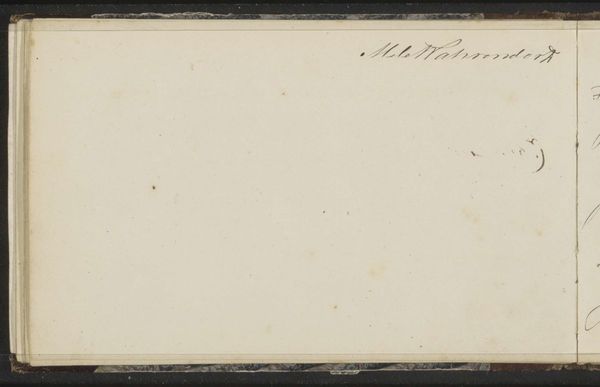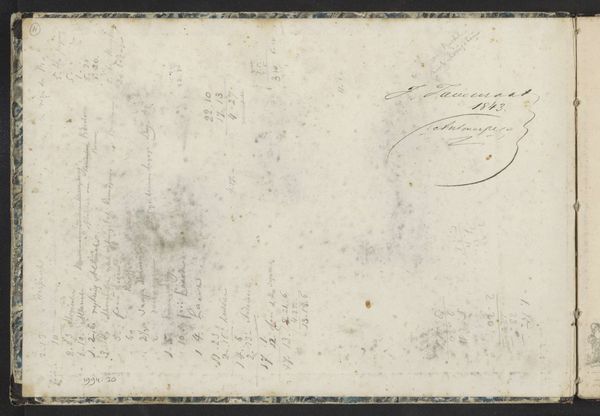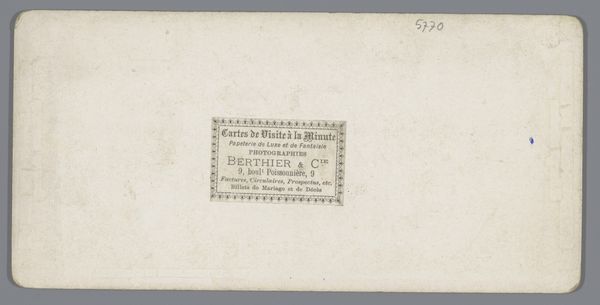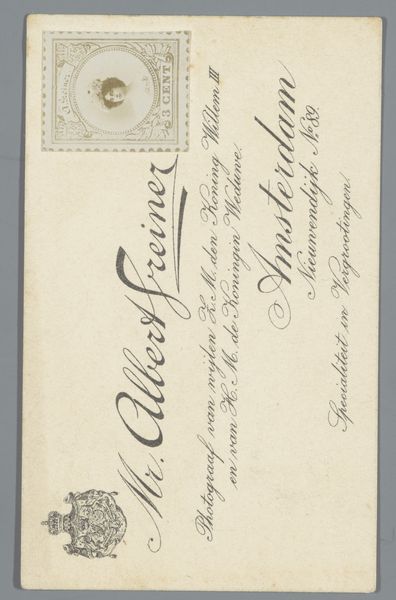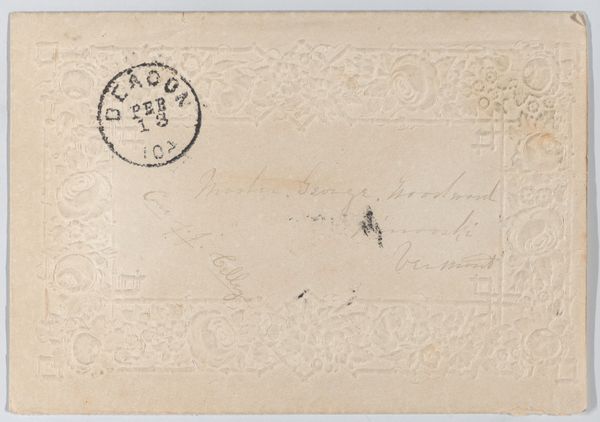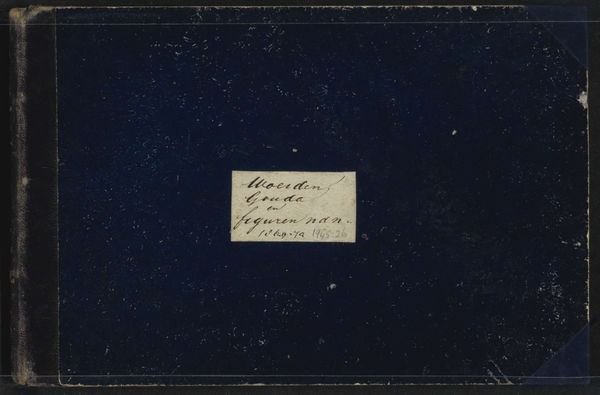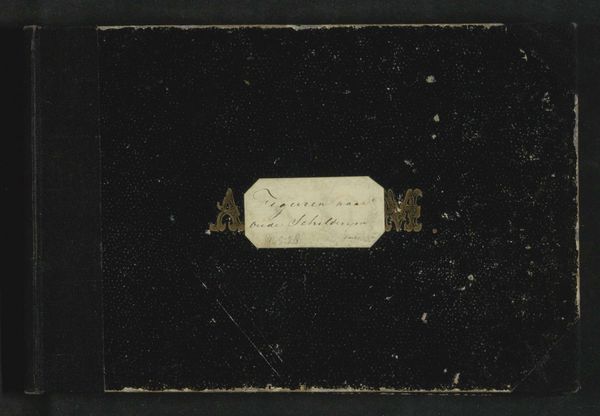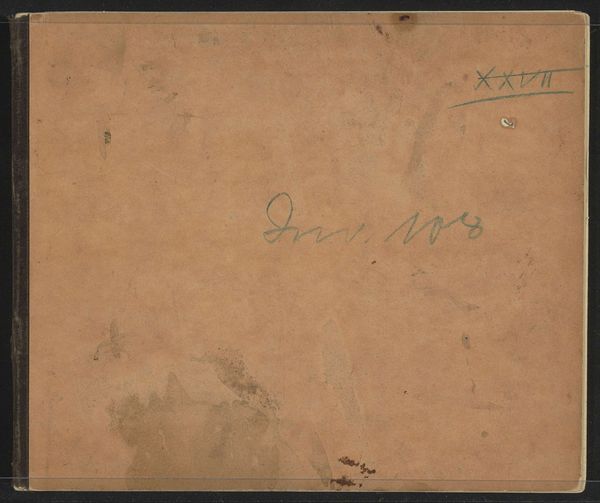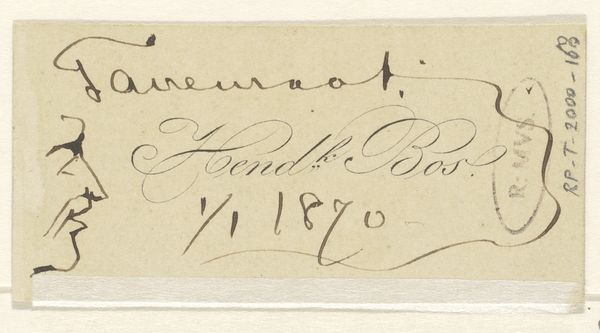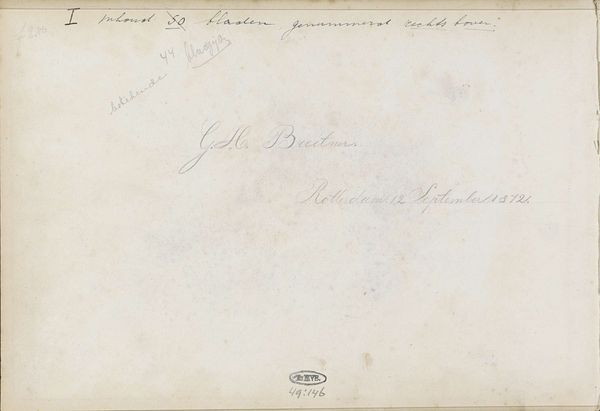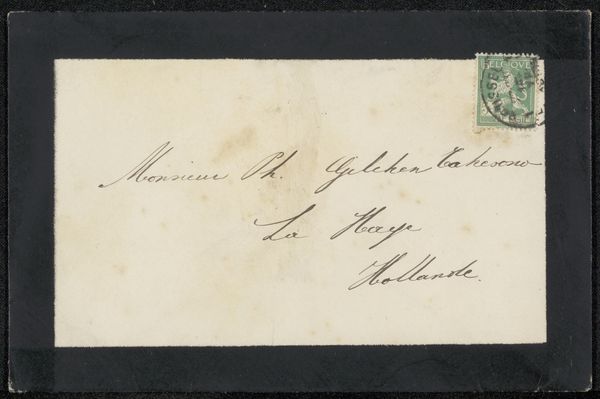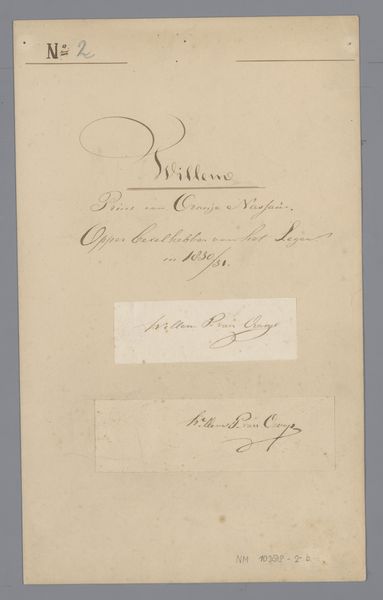
Copyright: Rijks Museum: Open Domain
This is a pencil drawing bearing the signature of Cornelis Springer, known for his cityscapes of Amsterdam in the 19th century. At first glance, it's simply a name scrawled on paper, but consider the institutional context. The Rijksmuseum, as a national institution, plays a role in shaping our understanding of Dutch art history. What does it mean for an artist's signature to be preserved and displayed? This drawing could be a discarded study, a preparatory sketch, or even a doodle. However, its presence in the museum elevates it, transforming it into an object of artistic interest. The act of signing one's name is also an assertion of authorship and a claim to artistic identity. In 19th-century Amsterdam, a thriving art market and established artistic institutions made an artist's signature a valuable commodity. Understanding the social and institutional forces at play requires further investigation. Archival research, examination of exhibition histories, and biographical study of Springer help us to unravel the complex relationships between artist, artwork, and institution. By exploring these connections, we can gain a deeper appreciation for the social life of art.
Comments
No comments
Be the first to comment and join the conversation on the ultimate creative platform.
